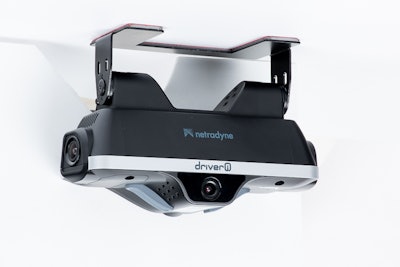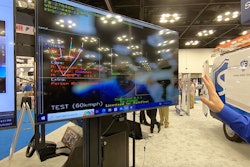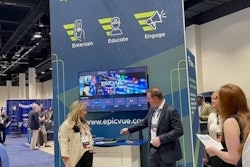
A Security Transport driver was traveling through Chicago when someone driving a pickup truck ran a redlight, causing an accident. Security Transport Safety Director Les Mayhew said his driver was about to be cited for the accident, but he was able to show the police officer video of the scene taken from the Netradyne dash camera on board and exonerate his driver.
Those cameras go beyond exoneration to improved safety scores and reduced insurance premiums, which are heavy hitters to a fleet’s bottom line.
Security Transport’s insurance policy is through High Definition Vehicle Insurance (HDVI), which partners with Netradyne to deploy AI dashcams to help fleets lower their insurance costs by up to 20%. Netradyne partners with other commercial trucking insurance providers as well, like Cover Whale.
“Everybody knows insurance prices have been on the rise. To understand the why we really have to know a little bit about how insurance is priced,” Bob Carl, fleet services and risk engineer at HDVI, said in a Truckload Carriers Association webinar on the impact of AI-enabled safety cameras on insurance. “Underwriters review things such as loss frequency, and loss frequency is on the rise across the entire industry. The cost to settle these losses is getting higher and higher. New equipment with more and more integrated technology just simply costs more to repair or replace.”
Other factors, like potential nuclear verdicts, CSA scores, driver pool and quality, shipping lanes and commodities hauled, are factors that come into play when insuring a fleet. But for an insurance provider, the overarching factor is safety. Carl said a fleet must take care of its CSA score like it’s a credit score, and to do that more and more insurance companies are adopting policies that require not just dashcams but AI-enabled dashcams, which provide more insight into accidents while offering real-time coaching to improve driver behavior.
[Related: AI accuracy is critical in avoiding false alerts and alert fatigue]
HDVI requires an outward-facing camera on every insured unit, while an inward-facing camera remains optional based on a fleet’s preference. Some, like Security Transport, have both. Mayhew said he only turns the inward-facing camera on when a driver has a repetitive safety issue that he needs to determine the cause behind. Maybe it’s distracted driving. The Netradyne system observes facial and eye movement via AI technology to detect distracted driving and will alert the driver to correct themselves within a certain timeframe before the incident is reported to a supervisor. The system records the entirety of a trip as well (instead of trigger-based recording) to provide a more well-rounded picture of what occurred in the event of an accident. For instance, the AI camera can validate speed-limit signs to determine if a driver is speeding, and it can detect when a driver runs a redlight even if an accident doesn’t occur and determine the why behind it.
“We get to see not only the risky behaviors and that broken down into different categories, but we also get to see all the good driving behaviors as well, which really started to allow us to coach drivers differently and change our conversations that we're having around drivers’ behaviors,” said Bobbi Farrow, business development specialist at Netradyne. “We started to analyze a lot more because we're not requiring a trigger to be able to report or see something that's happening on that drive. The vision is able to pick it up, and it's able to break these things down differently.”
Mayhew said once he finds the why behind the bad behavior and coaching is administered, he turns the inward-facing camera off.
[Related: Groendkye's new AI camera system detecting much more than prior system]
Carl said some carriers are concerned about having an inward-facing camera because, while cameras can help exonerate a driver, they could also implicate a driver who was, for example, using their phone while the truck was moving. But he said if an accident results in litigation, an attorney is eventually going to request the driver’s cellphone records and figure it out anyway. With the camera, he said the carrier can be prepared and oftentimes avoid litigation by settling, which isn’t as costly in the short term or, in the case of insurance premiums, the long term.
HDVI takes a different approach beyond the dashcam. The insurer assigns a fleet services representative to every fleet insured under HDVI, and the fleet service team will meet with a fleet on a monthly basis to review trends – “anything that could potentially get you in trouble when it comes to an audit or during a roadside inspection” – within the fleet and among its drivers. That’s paired with 24/7 access to the HDVI fleet portal and driver app that provides an online learning management system.
“For many fleets, safety managers do a lot of jobs, making their time limited and extremely valuable. I've walked in their shoes. I've been a driver; I've been a mechanic; I've managed repair shops and have been a safety manager for one of the largest private fleets in the U.S. I try my best to help share my expertise with the fleets that we service and try to take some of the burden off of them,” Carl said. “That's why every HDVI policy does come with a fleet services rep to help identify trends and provide actionable insights into that data.”
Carl said HDVI in February was able to move from offering a fleet a 12% discount to up to a 20% discount, but currently the insurer averages about 10% off their policy rates. He said Security Transport has saved, on average, 7% throughout its policy period and is currently up to a little more than a 10% discount on its premium while seeing more than a 200% jump in its Netradyne safety score.
[Related: Idelic launches Idelic Insurance Agency to offer coverage for commercial fleets]
In the traditional insurance market, fleets that invest in dash cameras might receive a small subsidy for their cameras, but they receive little if any insurance benefit beyond that, Carl said.
“If a fleet would have a $500,000 policy, they actually had the opportunity to save up to $100,000 throughout the policy term. The way the market has been, I'm sure most fleets could really use the extra cash in other parts of their business,” he said. “So using technology to your benefit can definitely help you save money, can save you time dealing with costly litigation, and can help you retain your drivers by helping them improve rather than just coaching them out the door for violations or accidents.”













